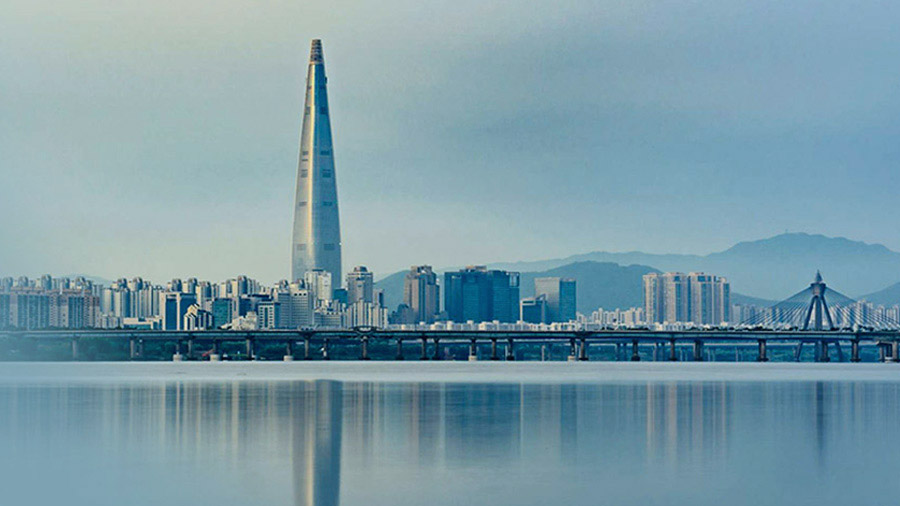We examine investment opportunities in the rare earth elements (REE) trade between India and Australia as the global supply chain remains heavily skewed in favor of China.
India and Australia are currently working on a tight deadline to finalize their interim trade agreement, which is expected sometime in March. This is to be followed by a Comprehensive Economic Cooperation Agreement (CEPA) 12-13 months thereafter. Among key components of the interim agreement is bilateral commercial cooperation across the rare earth elements (REEs) supply chain.
In February, Dan Tehan, the Australian Minister for Trade, Tourism, and Investment, highlighted the need for ‘deeper cooperation’ between the two countries on REE. Rare earths have wide ranging applications, ranging from use in smartphones to complex defense equipment.
Australia is the fourth largest producer of rare earths, accounting for 6.99 percent of global production. It also holds the sixth largest reserves of REEs in the world.
India, on the other hand, is seeking to modernize its defense ecosystem with new technology and expand renewable energy use. Such developments will require a slew of rare earth minerals.
India’s current REE value chain is not sufficiently developed to meet its domestic needs, creating opportunities for commercial cooperation with Australia.
Partnership potential: India-Australia rare earth elements trade
India’s position
While India has the world’s fifth largest reserves of rare earth minerals, it has not guaranteed self-sufficiency. Rare earths mining and extraction processes are capital intensive, consume large amounts of energy, and release toxic by-products. Also, processed minerals usually take the form of a rare earth oxide (REO), which then needs to be converted into a pure metal before it can be used to manufacture anything.
Currently, the Indian REE ecosystem is controlled by a single government-run corporation – Indian Rare Earths Limited (IREL). IREL is involved in the production of rare earth oxides, which are then sold to foreign corporations for extraction and manufacturing of finished products. This process is part of the upstream industry, which is low cost and yields low returns. Meanwhile, India’s midstream and downstream REE industries are not well developed and is why the country remains dependent on imports of rare earth magnets.
India currently does not have direct programs to facilitate the development of REE value chain. However, the government has launched key initiatives that will increase the demand for REEs exponentially. By 2030, India plans to have 30 percent of its automobiles powered by electric energy. To facilitate this transition, India has invested INR 100 billion in the Faster Adoption and Manufacturing of Electric Vehicles (FAME II) initiative, allocating 86 percent to incentives and 14 percent to vehicle charging infrastructure. This will create demand for permanent magnets and related products. Permanent magnets and the related high-tech industry are among key drivers of REE demand.
Further, the technology required for converting rare earth oxides into metal or alloy is proprietary, and closely held by a small number of countries. India imports majority of its midstream and downstream value-added products due to lack of local technology expertise and absence of the transfer of commercial-scale proven technology. Significant investments, technological transfers, and information support are thus required to develop the processing units that could place India at any sort of consequential position in the global REE value chain.
Currently, India imports most of its rare earth resources from China. Vulnerabilities in this arrangement became evident during the 2020 border standoff between the two countries. It is in India’s strategic interest to find alternate sources.
Australia’s position
Australia is the fourth largest producer of rare earths and holds the world’s sixth largest reserves. Yet, while the country has well developed extraction and processing capabilities, it does not currently possess the equivalent manufacturing demand.
The Australian government published a report last year titled, “Outlook for Selected Critical Minerals in Australia 2021”. As per the report, steered by the Department of Industry, Science, Energy and Resources, Australia’s mining production is projected to grow at 9.1 percent annually till 2030 and refined rare earth production is projected to grow by 69 percent during the same period. This makes Australia an ideal trading partner for China. However, with relations between the two countries entering testy waters since 2020, this trade relationship has become vulnerable. Canberra is now actively seeking new trading partners for its REE market, which brings India onto its radar.
We’re collaborating on the mining and processing of critical minerals – like cobalt and lithium and rare earth elements – that are vital to clean energy technologies, and have military applications. - Prime Minister Scott Morrison, Bengaluru Tech Summit 2021
Australian mining companies may want to gain exploration rights to India’s REE reserves. India can also offer Australian critical minerals producers the economies of scale for offtake arrangements and a robust pipeline of manufacturing-led commercial innovation opportunities. With its abundant critical mineral reserves and world-class mining expertise, Australia can assist India to achieve its industrial growth goals.
Australia has the technological expertise necessary for extraction and mining of rare earths. Australian companies and institutions could facilitate export of services and technologies used for processing, refining, recovering, and recycling of REEs.
Additionally, there is scope for third party involvement to enhance the supply chain efficiency and resilience, specially to fill the capability gaps in upstream processing.
Opportunities for investors
A 2021 Austrade report, “Unlocking the India- Australia Critical Mineral Partnership Potential”, identifies the following opportunities for companies that want to leverage a strong bilateral partnership in REE trade:
- Indian resources have limited content of heavy rare earths (HREEs). Australian project owners could explore strategic partnerships with Indian public sector companies to invest in processing or refining of Australian REE concentrates either in Australia or India.
- Australian companies could engage with Indian private sector companies, either involved in magnet or LED manufacturing, for offtake arrangements from advanced Australian REE projects, to cater to the growing demand.
- Australian project owners could engage with Indian private sector companies for investments in Australian HREE projects, to ensure long-term sustainable supply.
- Australian and Indian companies could explore a tripartite collaboration with other companies to bridge the gap in intermediate processing capabilities.
- Australian companies could engage with Indian private sector companies, such as Tata Group, Aditya Birla, Mahindra Limited, Permanent Magnets Limited, Dura Magnets, and for offtake arrangements from advanced Australian REE projects.
- Australian METS (Mining Equipment, Technology & Services) providers could supply processing technologies for Indian refining and separation facilities in the intermediate value chain.
- Australian project owners could explore strategic partnerships with Indian public sector companies, such as IREL and NMDC (National Mineral development Corporation), to invest in midstream processing of REE concentrates into rare earth oxides or mixed rare earth carbonates. The location of such projects in Australia or India can be based on transport and processing requirements of radioactive REE concentrates.
- Companies could explore a tripartite collaboration with countries that can help bridge the gap in intermediate processing capabilities, such as Japan, South Korea, Germany, and the US.
- Australian and Indian institutions could collaborate to research REE deposit geology in India, incorporating the latest global knowledge of REE deposit styles, to facilitate the development of Indian REE projects.
Update to An India Economic Strategy to 2035: Navigating from Potential to Delivery (IES)
Australia's Department of Foreign Affairs and Trade released its Update to the India Economic Strategy to 2035 - after the first India-Australia virtual summit took place on March 21, 2022.
"An India Economic Strategy to 2035: Navigating from Potential to Delivery (IES)" was first presented to the Australian Government in 2018, offering a roadmap to deepen economic integration with India.
The 2022 Update provides a five-year action plan for the Australian Government and responds to evolving opportunities for both countries, changed global circumstances, the improving bilateral relationship, and key economic reforms in India.
Priority sectors identified by the IES include technology, space, science and innovation, resources and METS (Mining Equipment, Technology, and Services) sectors, energy, health, education, agribusiness, defense, infrastructure, financial services, among others.
What are rare earth elements and why do they have strategic value?
Rare earths or REEs are the group of 17 elements (includes 15 lanthanides and yttrium and scandium). Each REE has unique properties and cannot be substituted by another mineral. Their strategic value is evident by their use in emerging and diverse technologies now considered indispensable in modern life as well as in the realm of defense systems and advanced tech.
Technologies using REEs include high tech consumer products like cellular phones, computer hard drives, electric (EV) and hybrid vehicles, and flatscreen monitors and televisions. Significant defense applications include electronic displays, guidance systems, lasers, and radar and sonar systems.
REEs are also extensively used in low emission technologies, including but not limited to, wind turbines and electric vehicles. Although the amount of REE used in a product may not be a significant part of that product by weight, value, or volume, the REE will be necessary for the device to function. For example, magnets made of REE often represent only a small fraction of the total weight, but without them, the spindle motors and voice coils of desktops and laptops would not function.
With the world transitioning to greener sources of energy and several countries implementing policy initiatives to facilitate the adoption of low emission technology, the demand for rare earth elements will remain very high.
According to a factsheet published by the White House in February, global demand for critical minerals, including rare earths, could go up by 400-600 percent in the coming decades. Additionally, REE trade is projected to grow from US$5.3 billion in 2021 to US$9.6 billion by 2026 at a CAGR of 12.3 percent during the forecast period.
How dominant is China in the global rare earths supply chain?
China has the largest known global reserves of rare earth metals. While it may cover only one-third of the total known world reserves, China has established a firm grip over global REE trade over the last four decades.
China accounts for 58 percent of global rare earth production. In addition, China produces 85 percent of rare earth finished products, 85 percent of rare earth oxides, and controls 95 percent of rare earth manufacturing.
China’s dominant status in the global REE trade can be traced back to the 1980s when the country branded rare earths as strategic commodity and used a wide variety of economic tools to grow the industry. The government’s intentions and importance given to policy support is reflected in the Chinese leader, Deng Xiaoping, proudly proclaiming at one time, ‘Middle East has oil, China has rare earths.’ China’s long term strategic vision and abundant support from the government established its dominance over REE market.
Since then, China has sought maintain its position atop the majority of world reserves through carefully accumulated technical expertise, low costs, relaxed regulations, and constant support from the government. It is also important to note that China dominates both low value upstream process (mining and extraction) and high value downstream process (manufacturing finished product). Therefore, it controls the entire market.
Additionally, the Covid-19 pandemic exposed the vulnerabilities of existing supply chains. Complete dependence on one country for supply of minerals has proven to be unsustainable in long run. Geopolitical concerns offer another reason why countries are looking for alternate channels to establish a resilient and sustainable supply.
This article was originally published on March 9, 2022. It was updated on March 24, 2022.









